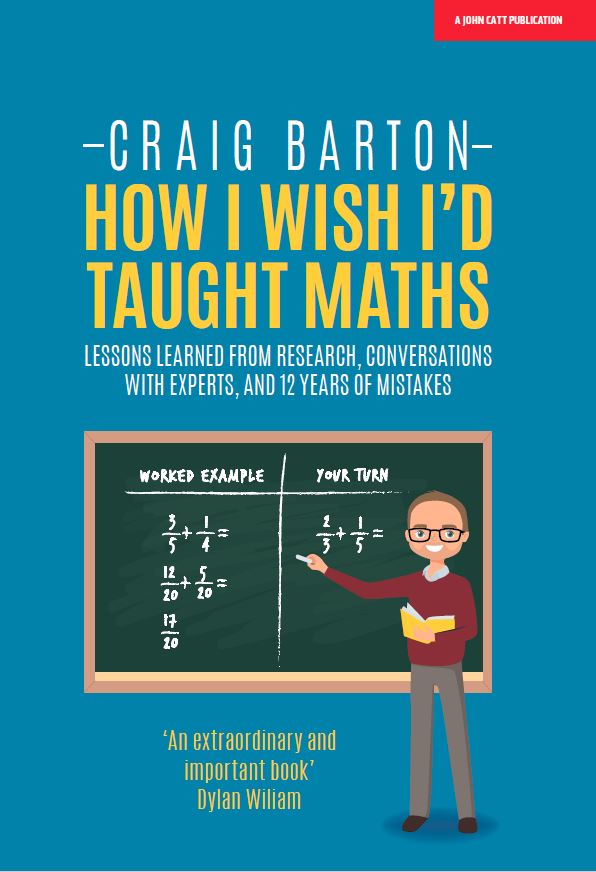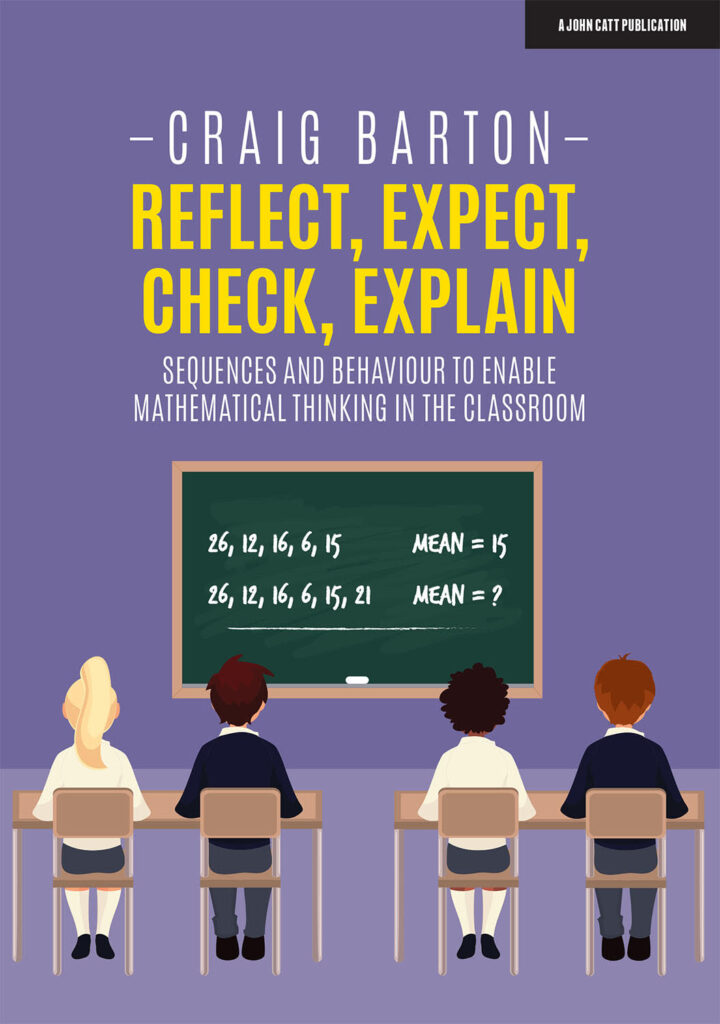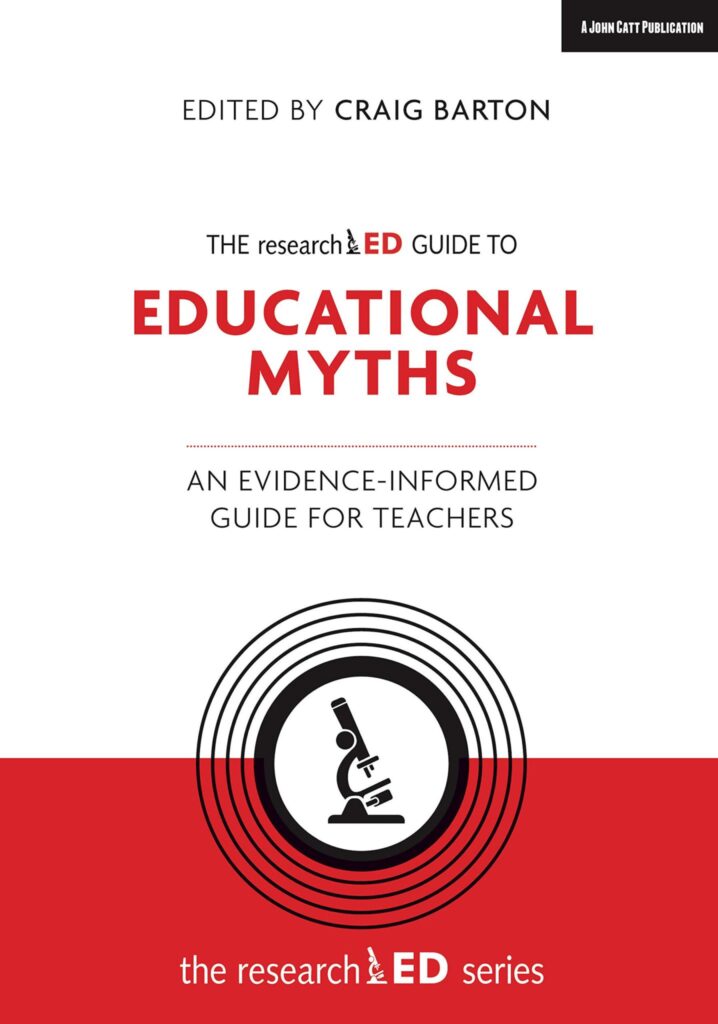
- Title: Early Numeracy and Mathematics Development: A Longitudinal Meta-Analysis on the Predictive Nature of Early Numeracy
- Authors: Liu, Y., Peng, P., & Yan, X
- Access the original paper here
- Listen to a deep-dive podcast:
Paper summary
This longitudinal meta-analysis investigates the predictive power of early numeracy skills (measured at or before formal schooling begins) on later mathematics achievement across grades K–12, utilizing data from 54 studies and over 58,000 students. The research seeks to understand if different early numeracy subtypes predict various later math skills differently and if this predictive relationship changes over time, considering factors like prediction intervals and initial age of assessment. Findings suggest early numeracy might function as a unitary construct, strongly predicting later advanced math skills and exhibiting a snowballing effect, where early advantages accumulate and positively impact math development over longer periods. The study also explores how student learning status might influence these relationships, noting potential limitations related to publication bias and statistical power for certain analyses.
If teachers are to remember one thing from this study, it should be…
Early numeracy is not merely a temporary steppingstone for foundational mathematics skills, but rather a crucial foundation that triggers a cumulative, long-term snowballing effect on mathematics development, particularly for later advanced mathematics skills
***Paper Deep Dive***
Define any technical terms used in the paper
Based on the provided sources, here are definitions for some of the technical terms used:
Mutualism (in education): A theoretical perspective suggesting that the development of academic skills like mathematics involves reciprocal contributions and synergistic growth among academic areas, cognitive abilities (like executive function), and social-emotional skills.
Early numeracy: This refers to the initial set of mathematics skills children learn, which forms the foundation for mathematics learning. These skills are typically measured at or before the first year of formal schooling and can include aspects like numbering, relations, and arithmetic operations.
Longitudinal study/meta-analysis:
A longitudinal study involves examining development over time, with measurements administered at two different times, at least six months apart.
A meta-analysis is a method that pools data from many studies to create a large sample size, which can enhance the reliability and robustness of conclusions. It allows for controlling or exploring various confounding or moderating variables to understand heterogeneity between studies.
Predictive nature/predictive validity: This describes how well early skills, such as early numeracy, can forecast or predict later performance, specifically in mathematics achievement.
Effect size: This study uses Pearson’s r correlation coefficient as the primary measure of effect size. This coefficient indicates the strength and direction of the linear relationship between two variables, such as early numeracy and later mathematics. Other related terms presented in the results include:
Fisher’s z scores: Pearson’s correlation coefficients are transformed into Fisher’s z scores for statistical analysis.
β (Beta): Represents the coefficient for a variable (such as a moderator) within the meta-regression models.
SE (Standard Error): An estimate of the standard deviation of the beta coefficient.
t: The t-statistic used in statistical tests for significance.
df (Degrees of freedom): Relates to the number of independent values that can vary in a statistical calculation.
CI (Confidence Interval): A range that is likely to contain the true value of the effect size or beta coefficient.
p value: The probability used to determine statistical significance.
τ² (Between-study sampling variance): A measure of the true variance in effect sizes across studies, beyond what would be expected by chance.
Moderators/moderating variables: These are variables that influence the relationship between the predictor (early numeracy) and the outcome (later mathematics). In this study, moderators examined included subtypes of early numeracy, types of later mathematics, initial age, prediction intervals, and student learning status.
Steppingstone hypothesis: Within the context of academic development, this hypothesis suggests that skills are acquired sequentially, with foundational skills serving as prerequisites for more complex ones. Regarding early numeracy, this would imply its effects are more closely related to foundational later skills, relatively temporary, and might decrease over time or with development.
Snowballing Trigger Hypothesis/developmental cascade: This describes a mechanism where initial advantages in one area (like early numeracy) accumulate over time, leading to increasingly substantial growth and proficiency in related areas (like later mathematics). As a trigger, early numeracy’s impact is accumulative, potentially becoming stronger over longer prediction intervals and having a greater effect on later advanced skills. A developmental cascade refers to this process of initial advancements gaining momentum over time.
Unitary construct: This refers to the idea that various skills within a domain (such as different types of early numeracy) are primarily underpinned by a single common underlying factor.
Diverse construct: This suggests that the skills within a domain (like early numeracy) are distinct from each other and may be represented by multiple factors.
Subtypes of Early Numeracy: Based on a three-factor model, early numeracy was coded as consisting of:
Numbering: Ability to understand counting sequences, including cardinality, one-to-one correspondence, numeral identification, and subitizing.
Relations: Ability to understand relationships between numbers or sets, including quantity matching, number line estimation, and quantity discrimination.
Arithmetic operations: Understanding composition/decomposition of sets/numbers, including addition/subtraction and story problems.
Later mathematics skills: These are the mathematics outcomes measured after the initial early numeracy assessment and at least six months later. The study categorized these outcomes as:
Foundational mathematics skills: Skills like calculations and fact fluency that are relatively easier to master. Fact fluency involves mastering sums between 0 and 10 for quick and accurate answers, while calculations involve multidigit addition, subtraction, multiplication, and division.
Advanced mathematics skills: Skills like word problems and algebra that are procedurally more complex and draw more cognitive resources. Word problems require understanding a narrative, identifying relevant information, and solving problems presented in text form. Algebra involves problems solved using symbol manipulation algorithms, and geometry involves shape, size, position, and spatial properties.
Initial age (T1): The age of the student at the time when early numeracy was first measured.
Prediction intervals: The duration of time between the initial measurement of early numeracy and the later measurement of mathematics.
Student learning status: Classification of students as either typically developing or having mathematics learning disabilities. Students with mathematics learning disabilities often show lower initial early numeracy performance and more heterogeneity in skills compared to typically developing peers.
Random-effects model: A statistical model suitable for meta-analysis when the true effect sizes vary across studies due to differences in participants, measurements, or other factors.
Weighted random-effects meta-regression models: These models extend the random-effects approach to include moderator variables, giving more weight to studies with smaller sampling errors.
Robust variance estimation: A method used in the statistical analysis (like meta-regression) to account for dependency among effect sizes, used in the R package “robumeta”.
Egger’s regression test: A statistical test to check for potential publication bias in a meta-analysis.
Funnel plots: Scatter plots used to visually inspect for publication bias or heterogeneity, plotting effect sizes against a measure of their precision (like standard error).
Sensitivity analysis: Analysis performed to see if the results are robust and do not depend heavily on specific studies or assumptions.
Publication bias: The tendency for studies with statistically significant findings to be more likely to be published, which can distort the results of a meta-analysis if not accounted for.
Benjamini-Hochberg procedure: A method used to adjust the p-values obtained from multiple statistical tests to control the false discovery rate.
False discovery rate: The expected proportion of rejected null hypotheses that are actually true.
Coding reliability: A measure of the consistency in how data from the included studies were extracted and categorized by independent coders.
Independent samples: Distinct sets of data collected from participants within studies included in the meta-analysis.
What does this paper add to the current field of research?
Based on the sources provided, this paper, “Early Numeracy and Mathematics Development: A Longitudinal Meta-Analysis on the Predictive Nature of Early Numeracy,” adds significant insights to the current field of research in several key ways:
- Provides Strong Meta-Analytic Evidence for the Predictive Power of Early Numeracy: While many individual longitudinal studies had shown that early numeracy predicts later mathematics performance, findings were often mixed. This meta-analysis synthesizes data from 54 longitudinal studies involving over 58,000 students in grades K-12, providing a robust, large-scale confirmation that early numeracy measured at or before the first year of formal schooling significantly predicts later mathematics achievement measured six months or more later (overall correlation r = .49). This provides a much stronger evidence base than individual studies alone.
- Addresses the Unitary vs. Diverse Construct Debate: A long-standing debate in the field concerned whether early numeracy is a single, unitary construct or composed of diverse, distinct subskills (numbering, relations, arithmetic operations). Different factor analyses and longitudinal studies had yielded mixed findings. This meta-analysis investigated whether different early numeracy subtypes differentially predicted different later mathematics skills. The findings suggest early numeracy may be a unitary construct, as there was no clear and consistent pattern showing that different types of early numeracy skills predicted different later mathematics skills differently, after controlling for other moderators. This aligns with some previous factor analytic findings and helps explain the high correlations often observed between the subtypes.
- Provides Strong Evidence Supporting the Snowballing Trigger Hypothesis over the Steppingstone Hypothesis: A major question was how the predictive validity of early numeracy changes over time – does its effect diminish (steppingstone hypothesis) or grow (snowballing trigger hypothesis)?
- This study found that the relations between early numeracy and later mathematics strengthened quadratically with longer prediction intervals. This robust pattern supports the snowballing trigger hypothesis, where initial advantages accumulate over time.
- Furthermore, the study showed that early numeracy was more predictive of later advanced mathematics skills (such as word problems and algebra) than of later foundational mathematics skills (calculations and fact fluency). This finding directly challenges the steppingstone hypothesis, which would predict stronger relations with foundational skills, and supports the snowballing trigger idea that early skills have a cumulative impact that extends to more complex later skills.
- Highlights the Importance of Early Assessment Timing: The meta-analysis revealed that the earlier early numeracy was assessed, the stronger its prediction of later mathematics. This provides quantitative support for the critical timing of early numeracy development in triggering long-term positive effects, as suggested by the snowballing hypothesis.
- Synthesizes Moderating Effects on the Relationship: By using meta-regression, the study was able to explore how variables like subtypes of early numeracy, types of later mathematics, initial age, prediction intervals, and student learning status moderated the relationship between early numeracy and later math. While some moderation analyses were limited by the number of studies, the study confirmed that prediction intervals and the type of later mathematics outcomes are significant moderators, providing a more nuanced understanding than simply looking at an overall correlation. It also provided insight into how the relationship might differ for students with mathematics learning disabilities depending on the type of later math skill.
In summary, this meta-analysis moves beyond simply confirming the link between early numeracy and later math. It provides large-scale evidence to clarify the structure of early numeracy based on its predictive patterns and, crucially, offers strong support for the theory that early numeracy acts as a trigger for a cumulative, snowballing effect on mathematics development, particularly for advanced skills over longer periods, rather than merely being a temporary steppingstone. This has significant theoretical implications for understanding developmental trajectories and practical implications for the focus and timing of early mathematics assessment and instruction.
What are the characteristics of the participants in the study?
Based on the sources provided, the participants in this meta-analysis study had the following characteristics:
Studies were categorized by publication type, with 127 independent samples from peer-reviewed articles and 10 from dissertations.
Overall Scale: The study synthesized data from 54 longitudinal studies. These studies collectively involved over 58,000 students. The total number of independent samples (combinations of different measurement time points within studies) included in the analysis was 137.
Grades: The students were in grades K-12.
Age and Assessment Timing:
Early numeracy skills were measured at or before the first year of formal schooling. The mean initial age of students when early numeracy was assessed was 5.92 years (with a standard deviation of 0.64). The age range for this initial assessment was 3 to 7.1 years.
Later mathematics achievement was measured six months or more after the initial early numeracy assessment. The mean age of students when later mathematics was assessed was 8.66 years (with a standard deviation of 1.79). The age range for the later assessment was 6.5 to 13.5 years.
If a study did not report the exact age, the authors coded the average age based on the grade level, using typical compulsory schooling ages in the U.S. (e.g., kindergarten at 5.5 years, Grade 12 at 17.5 years).
Learning Status: The samples included both typically developing students and students with mathematics learning disabilities. There were 120 independent samples of typically developing students and 17 independent samples of students with mathematics learning disabilities. Studies that did not specify student type were coded as typically developing.
Geographic Origin: The included studies were conducted in 12 countries. These countries included both English-speaking regions (such as the U.S., Australia, Britain, and Canada) and non-English-speaking regions (such as Belgium, China, Finland, Germany, Netherlands, Norway, Sweden, and Turkey).
Other Coded Information:
Gender was reported as the percentage of male participants in the studies.
What are the key implications for teachers in the classroom?
Based on the sources provided, the meta-analysis “Early Numeracy and Mathematics Development: A Longitudinal Meta-Analysis on the Predictive Nature of Early Numeracy” has several key implications for teachers in the classroom:
- Emphasis on Early Assessment and Instruction: The study provides strong evidence that early numeracy skills measured at or before the first year of formal schooling significantly predict later mathematics achievement. Crucially, the study found that the earlier early numeracy was assessed, the stronger its prediction of later mathematics. This implies that assessing and addressing early numeracy skills very early in a child’s educational journey is vital.
- Focus on a Comprehensive Set of Early Numeracy Skills: The findings suggest that early numeracy may function largely as a unitary construct. While early numeracy includes different subtypes (numbering, relations, arithmetic operations), these did not consistently differ in their predictions of different later mathematics skills after controlling for other factors. This suggests that instruction on a comprehensive set of early numeracy skills before formal schooling is beneficial, rather than necessarily needing to tailor instruction strictly to individual subtypes based on their predictive power for specific later skills.
- Recognition of Long-Term, Cumulative Impact: The study strongly supports the “snowballing trigger hypothesis,” finding that the relationship between early numeracy and later mathematics strengthens over longer periods. Early numeracy’s impact is not temporary; it appears to trigger a cumulative effect on mathematics development. Furthermore, early numeracy was found to be more predictive of later advanced mathematics skills (like word problems and algebra) than of later foundational skills (like calculations and fact fluency). This underscores that early numeracy skills lay the foundation for more complex mathematical thinking that develops much later. Teachers should understand that fostering these early skills has benefits that extend far beyond the initial learning period.
- Importance for All Students, Especially Those At Risk: The findings suggest that early numeracy instruction should be a component of early mathematics instruction regardless of students’ ages or learning status. The meta-analysis also indicated that the relationship between early numeracy and later fundamental mathematics (like fact fluency) can be stronger for students with mathematics learning disabilities compared to typically developing students. This highlights the particular importance of early numeracy interventions for students at risk of mathematics difficulties to help mitigate the widening achievement gap over time.
- Informing Assessment for Identification: Assessing a comprehensive set of early numeracy skills can be valuable for identifying students who may be at risk for mathematics learning disabilities.
It is important to note that these implications are based on correlational data from the studies included in the meta-analysis. While correlation indicates a strong association, it does not definitively prove that early numeracy causes the later mathematics outcomes. However, the robustness and consistency of the findings across many studies support these practical takeaways for educators.
Why might teachers exercise caution before applying these findings in their classroom?
Based on the sources and our conversation, teachers should exercise caution before directly applying these findings in their classroom for several key reasons:
- Correlational Nature of the Findings: The study is a longitudinal meta-analysis that examines the predictive nature of early numeracy using correlations. While the study found a significant association (r = .49), and that this association strengthens over time, correlation indicates a strong association but does not definitively prove that early numeracy causes the later mathematics outcomes [User’s prior query response, inferred from 108]. The authors note that the implications are based on correlational data and suggest that future experimental studies are needed to test the mechanisms that underlie the relationship. Therefore, while early numeracy is a strong predictor, this study alone doesn’t definitively prove that teaching specific early numeracy skills causes the observed later math success in a direct, causal way that teachers can immediately implement as a guaranteed intervention.
- Inferential Evidence for Mechanisms: While the study provides strong support for the “snowballing trigger hypothesis” over the “steppingstone hypothesis”, the evidence for the mechanism (how early numeracy leads to later success, e.g., early numeracy → fact fluency → calculations → word problems) is considered inferential in nature due to data limitations preventing the testing of multiple-mediator models. Teachers might infer from the “snowballing” idea that early gains directly build specific later skills, but the precise developmental cascade wasn’t proven in this meta-analysis.
- Limited Statistical Power for Some Specific Analyses: The authors acknowledge that statistical power was limited for some moderators. Specifically, analyses looking at types of later mathematics (such as algebra and geometry) and student learning status (like students with mathematics learning disabilities) within detailed moderation models had limited statistical power. Results from these analyses should be interpreted with caution. This means that while the study found some differences in prediction for students with disabilities versus typically developing students or for different later math skills, these specific findings might not be as robust as the overall effects due to sample size limitations within those subgroups.
- Potential for Publication Bias: The study detected publication bias using Egger’s regression test. Although the authors present arguments and sensitivity analyses suggesting the bias might not have a large impact, and note that meta-analyses of correlations are less likely to be influenced by publication bias than intervention studies, the detection of bias is still a limitation. This means there might be a tendency for studies showing stronger positive correlations to be published more frequently than those showing weaker or non-significant ones.
In summary, while the study offers compelling large-scale evidence about the importance and predictive power of early numeracy, particularly supporting a long-term, cumulative impact, teachers should be mindful that the findings are largely correlational. The study identifies strong associations and supports a theoretical model of development, but it does not provide direct experimental evidence for specific instructional strategies or causal pathways that teachers could implement for guaranteed results. The limitations in analyzing certain subgroups also warrant caution when applying specific moderation findings.
What is a single quote that summarises the key findings from the paper?
Together, these findings suggest that early numeracy may be a unitary construct. Early numeracy does not merely serve as a steppingstone with temporary effects on foundational mathematics; instead, it likely triggers a snowballing effect, cumulatively influencing mathematics development over time.








